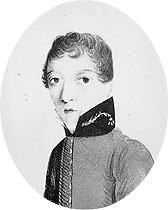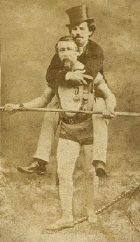
James Barry cut an impressive figure as a British military surgeon, working tirelessly to improve conditions for wounded soldiers around the globe. He worked with Florence Nightingale, performed the first successful cesarean section in Africa, and rose to the rank of inspector general of British military hospitals.
So when he died on July 25, 1865, the attendants were surprised to find he was a woman.
No one knows who she was, where she came from, or what led her to a career in military medicine. She’s buried in London under the alias she lived by.
See also Charley Parkhurst.




